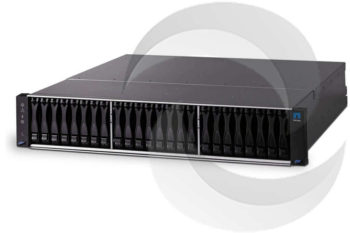The Benefits of NetApp All-Flash Arrays
How are you storing all the organizational data? Enterprises often look to all-flash arrays to manage their data storage needs, as it helps them meet even the most demanding workloads seamlessly, and helps get actionable business insights quickly.
All-flash arrays (AFAs) have been instrumental to facilitate intensive workloads related to IoT, virtual desktop environments, and online transaction activities. NetApp produces all-flash FAS storage which comes with their proprietary Data ONTAP operating system and provides several advantages for enterprise data management.
The Top Reasons You Will Love NetApp All-Flash Arrays
So, what are the top reasons to go for NetApp All-Flash arrays? Let’s explore the benefits of it:
Enhanced Storage Performance
The new offerings from NetApp FAS appliances make use of multiple CPU cores and improvements in software to achieve higher SSD (solid-state drive) speeds compared to other platforms. The NetApp FAS 8000 range comes with Gen3 architecture and PCIe to scale up to 24 nodes to run hundreds and thousands of IOPS with latency of milliseconds. It also supports around 5 PB of SSD storage which is beneficial for enterprises.
The Write Anywhere File Layout (NetApp WAFL) journaling technique removes write penalties related to all SSDs by eliminating SSD writes out of the critical latency path of workloads. It achieves the feat by first writing directly to system memory instead of writing to SSDs which makes the process much faster. All incoming writes are protected through non-volatile random-access memory (NVRAM) and battery-backed FAS systems.
The NetApp FAS devices enable read-ahead caching by using a proprietary read-ahead algorithm which identifies the data which has high probabilities of being read. The algorithm detects read patterns and stages them to system memory even before a read request is initiated. There is no need to turn to SSDs for data as cache reads are performed directly from memory.
The WAFL of NetApp utilizes super flexible SSD write allocation policies along with a proximal pattern of writing to cut back unnecessary operations of the SSD while writes are being de-staged to SSD from the memory. The mechanisms make sure that no blocks are assigned permanently to fixed disk locations. The process is able to optimize the writing capabilities of the SSD and cuts back the requirement of extra write cycles which is a drawback of flash technology.
Enterprise Class Features
The clustered data ONTAP enables non-disruptive operations which benefits all-flash arrays when it is being deployed as a component of scale-out cluster. The same ONTAP has been proven to offer 99.999% uptime in a production environment.
The capability of transferring workloads within a cluster that can be scaled up to 24 nodes offers various advantages. A number of operations such as hardware and software updates, performance balancing and other crucial lifecycle operations can be performed without any storage downtime. Data protection expenses can also be slashed significantly by the ability to replicate data from all-flash nodes to hybrid nodes with lower costs per terabyte.
Users can also respond effectively to changing price or performance requirements by moving workloads seamlessly between all-flash nodes and hybrid nodes.
Efficient Storage
SSDs have one drawback and that is the high cost compared to HDD based storage arrays and hybrid systems that integrate HDDs and flash. But the companies are taking help of techniques such as compression and deduplication to account for increased costs of SSDs.
NetApp has made it possible to reduce the cost by providing access to wider range of storage efficiencies through deployment of all-flash array combined with Data ONTAP. The systems use different technologies such as Snapshot™ technology, RAID-DP®, Thin provisioning, Data compression, Deduplication, Storage-efficient replication and FlexClone® technology to use data storage capacity exceeding the raw storage capacity.





